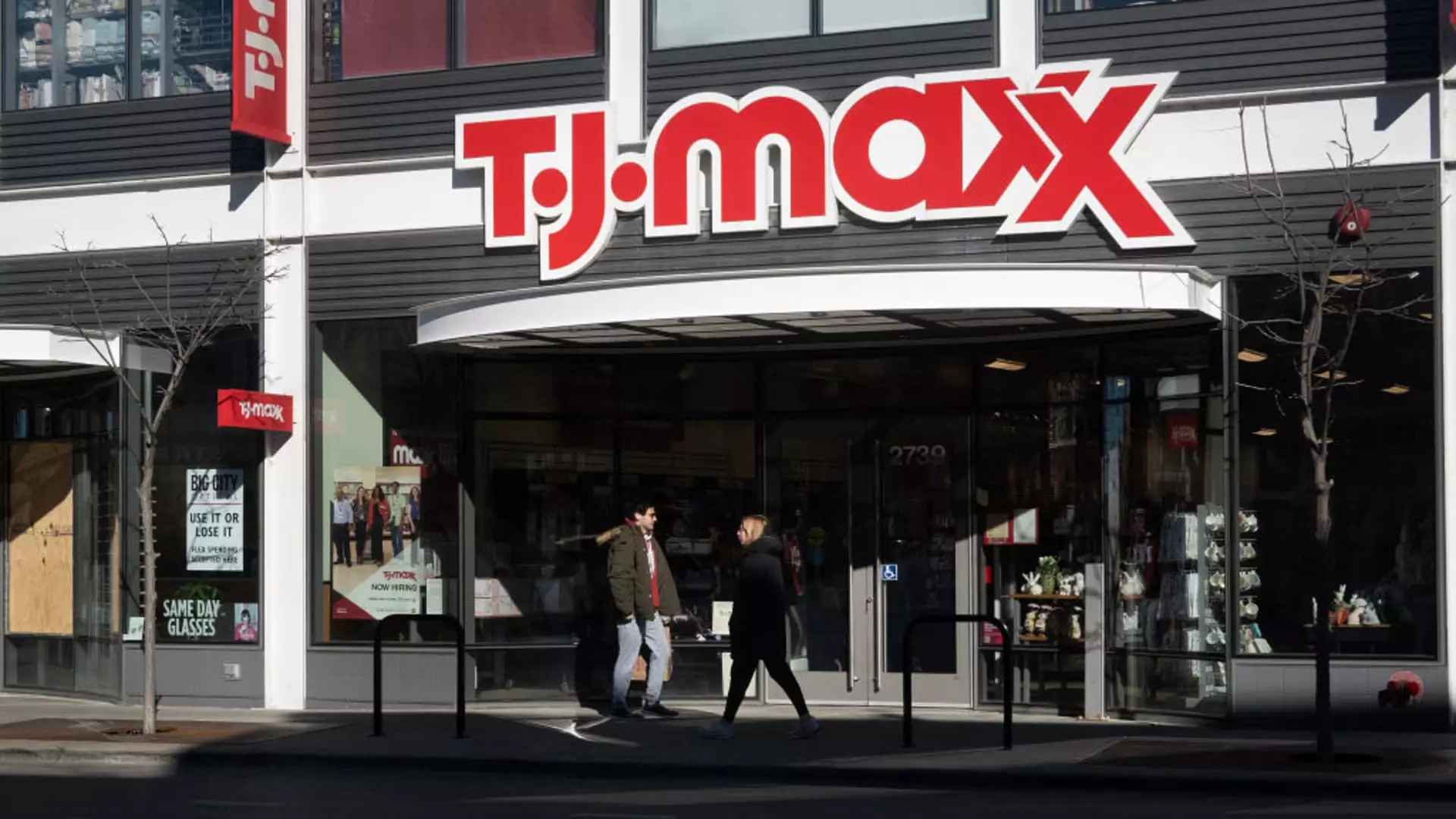In the latest fiscal quarter, TJX Companies, the parent company of renowned off-price retailers T.J. Maxx, Marshalls, and HomeGoods, reported strong financial results that initially buoyed investor sentiment. However, a subsequent dip in its stock price reflects a mixed interpretation of its future potential. While TJX exceeded analysts’ projections for the quarter ending November 2, concerns about its holiday earnings guidance have left investors questioning the sustainability of its recent success.
The company reported earnings per share (EPS) of $1.14, surpassing the consensus estimate of $1.09, while total revenues reached $14.06 billion—again exceeding predictions of $13.95 billion. Year-over-year, net income rose noticeably to $1.30 billion from $1.19 billion, highlighting consistent growth. Yet, the forecast for its holiday quarter indicates expected EPS in the $1.12 to $1.14 range, falling short of the anticipated $1.18. This underwhelming outlook, particularly during the critical holiday shopping period, has stirred caution among investors.
Calibrating Expectations for the Holiday Season
Despite the reassuring remarks from CEO Ernie Herrman about the strong start to the holiday quarter, the cautious guidance reveals a more tempered outlook based on the company’s internal forecasts. A significant detail disclosed was the expected reversal of improved pretax profit margins and the impact of expense timing on performance metrics. While TJX confidently asserts its comparable sales will grow 2-3% during the holiday season—aligning closely with what analysts predicted—it nonetheless raises questions about the trajectory of its growth in a competitive retail landscape.
Moreover, the retailer has increased its guidance for full-year earnings to between $4.15 and $4.17, up from earlier expectations. This adjustment, while positive, aligns with prior market predictions, suggesting that while TJX is not faltering, its growth may not be as rapid as previously anticipated.
Breaking down the performance by division illustrates a nuanced picture of the company’s operations. Comparable sales growth at the Marmaxx division was subdued at 2%, compared to an impressive 7% in the prior year. Similarly, HomeGoods also experienced slower growth, recording a 3% increase in comparable sales as opposed to the 9% from a year earlier. Furthermore, TJX Canada barely matched last year’s numbers with a 2% rise, while the only segment that truly excelled was TJX International, boasting a significant 7% growth compared to a mere 1% the previous year.
These results indicate that while TJX’s brands are resonating with consumers, particularly those switching from traditional department stores, the company faces challenges in sustaining its explosive growth rates. Importantly, TJX’s expansion into international markets, like its recent venture in Dubai and planned entry into Spain, signals a strategic shift aimed at capturing a broader consumer base amid a maturing domestic market.
As TJX navigates the current economic landscape, broader consumer trends play a critical role in shaping its outlook. The company has effectively captured the value-seeking demographic, gradually drawing in younger shoppers who are increasingly embracing off-price retail. However, potential pitfalls loom, particularly regarding economic volatility and consumer spending behavior affected by limitations imposed by external factors such as inflation or shifts in discretionary spending.
Interestingly, analysts voiced concerns over how unseasonably warm weather might impact sales, notably influencing lower-income consumers who typically adjust their purchasing habits based on immediate needs. While initial fears of diminished sales were predicted due to the lack of colder temperatures in the fall, TJX appears not to have suffered significant setbacks in this regard after all.
Despite current apprehensions, an encouraging aspect is TJX’s ability to remain relevant in a shifting retail environment. With a focus on enhancing the customer shopping experience and an adaptive strategy tailored to consumer trends, the company is better positioned to take advantage of seasonal shopping peaks and prolonged economic recovery.
However, a looming challenge remains: maintaining robust sales amid a backdrop of fluctuating market conditions and evolving consumer preferences. As TJX prepares for the holiday season and its subsequent quarters, a careful balance between managing expectations and leveraging growth opportunities will be crucial in navigating the competitive landscape of off-price retailing.
While the immediate outlook reflects some caution, the long-term trajectory may still offer pathways for growth as TJX refines its strategies and adapts to changing market dynamics.

